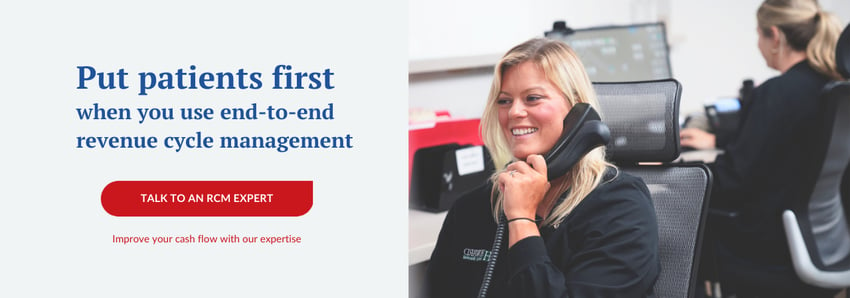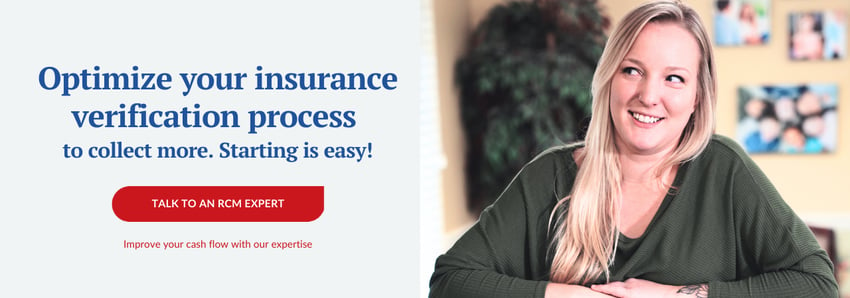Dental insurance verification checklist for dental teams


If you want your dental practice to be profitable, start with insurance verification.
Insurance verification is the best thing you can do for a smooth dental billing process because it leads to payable claims. It’s so important because without this step, you can’t accurately explain treatment costs to your patients. And worse, you will waste time and money fixing mistakes, or filing claims you didn’t need to send in the first place because coverage didn’t exist.
The better you understand this step, the more you can help your practice be successful.
So dental insurance verification is crucial to not just keeping your patients happy, but also a fast, accurate claims process that your dental practice needs to be successful.
Dental ClaimSupport is made up of dental billers who have previously worked in dental offices, specifically in insurance verification. Through this experience, we know how to streamline your insurance verification process. We also know how helpful it can be to have a dental insurance verification checklist so you get the data you need.
As a dental professional, you’re busy with other tasks around the office. That’s why we’ve written this article. In it, you will have a checklist for dental insurance verification.
Reading this article, and even keeping it bookmarked on your computer will help you and your team move through the dental insurance verification process with ease, assured you’ve covered every step.
Ask yourself, is the dental patient eligible for insurance benefits?
Insurance verification (IV) is to record the active coverage for a patient and their benefits prior to the patient’s appointment. It’s the first step no matter what their insurance plan is - are they eligible for their benefits? In order to answer this question, you will pull up their insurance portal, and look for their coverage details. Here is a standard insurance verification checklist to run through:
1. Find the effective date of their benefits
This lists when the patient's benefits go into effect. If they just got a new insurance plan, there’s a chance their benefits have not gone into effect yet. This is something you’d need to check for FIRST.
2. Check their plan maximum
The patient’s insurance maximum is the total amount of money the insurance provider will pay for their dental care within a 12-month period. You will need to look into this especially if they are close to reaching their maximum.
If they exceed their maximum, the patient will have to pay more out of pocket, and this is certainly something you’d need to communicate with the patient.

3. Determine their typical coverage percentages
You and the patient should both understand how much the insurance will actually cover the planned procedure. The percentages are typically 100, 80, or 50% coverage from insurance.
This means the patient will pay the remainder. This is important for them to understand, and it can help you give each patient an estimation of how much will be coming out of their pocket. Be sure you emphasize the word “estimation,” when you tell them their out-of-pocket expenses.
4. Figure out the patient’s deductible
The deductible can also affect what a patient will pay. A deductible is the set amount of money a patient pays out-of-pocket for dental expenses before the insurance company pays the plan’s benefits.
Most plans include a yearly deductible per person and a family deductible. Again - this is something your patient should know. But as you probably know, many patients don’t understand their insurance coverage.
Explaining what they will owe as you do insurance verification will help you build trust with the patient and prevent surprise bills at the end of their treatment.
5. Check for any benefits already used
Has the patient already used a majority of their benefits for the year? If this is the case - clarify this to the patient and perhaps try to schedule their treatment for a time when their insurance renews for the year. Never let the insurance benefits dictate the treatment you provide. Delaying treatment may cost more in the long run. Small treatment can become extensive and expensive.
Obviously, this depends on the urgency of whatever procedure needs to be done. At least give the patient the choice to know what it would cost if they have already used their benefits.
Okay, we’ve gone through the standard benefits you need to verify. Check! Now let’s check on the exclusions and clauses.
Next up, look through the patient’s dental insurance exclusions and clauses
Exclusions and clauses refer to certain rules or conditions in the patient’s insurance plan contract. This is the small print you need to make not to miss - it can greatly affect how the patient will be covered by their benefits. Here are a few types of conditions you need to check for during insurance verification:
1. Frequency
A dental insurance plan can limit the number of times it will pay for a certain treatment. For example, the patient’s plan might only pay for two cleanings a year. If you notice the patient is coming in for a third cleaning and their plan limits them to two during verification, communicate this to the patient so they will know it won’t be covered by insurance - if they still wish to come in.
2. Age limitation
Depending on the insurance plan, a person of the age of 26 and older is usually not allowed to be covered under their parent’s insurance plan. Check to make sure the patient hasn’t reached the age that they will no longer be covered by their parent’s insurance.
There are procedure age limits as well. For example, you can receive orthodontic benefits up to age 18 or get fluoride covered by benefits at age 16 and under.
-1.jpg?width=659&name=DSC00459%20(1)-1.jpg)
3. Replacement clause
In dental insurance, a replacement clause stipulates that the insurance company will not pay for a replacement for certain dental procedures such as a lost retainer, or a filling replaced before 24 months of the original placement date.
For example, if your patient received a bridge four months ago, and needs it to be replaced, their insurance plan might state that they will not pay for it to be replaced for 5 to 10 years.
If your patient calls in need of a new bridge, and you verify their insurance and notice this replacement clause, you’ll need to schedule the replacement accordingly.
4. Missing tooth clause
If a patient loses a tooth and needs treatment make sure you check for a missing tooth clause during insurance verification. If the patient lost the tooth before their insurance began, the insurance will not cover the treatment needed for the missing tooth.
However, if the employer is the same and just switches to a new insurance carrier, this can be appealed.
5. Waiting periods
What you’ll notice about a lot of these exclusions and clauses, is that many of them depend on timing. You need to check for waiting periods during insurance verification because it is the patient’s time period before specific dental procedures will be covered.
This is usually for restorative or major dentistry, but it is always good to check.
So if the patient JUST enrolled in a new insurance plan, there might be a waiting period keeping them from being able to actually use their insurance.
6. Downgrades
Obviously, all of these rules and conditions are important, but if there is a less expensive option for treatment, your patient legally should know about it. This is what a downgrade is - when insurance plans will pay for the least expensive procedure if there is more than one acceptable option.
If their insurance is willing to cover a downgrade, make sure to take note during insurance verification and give them that option. Some in-network plans even require a downgrade document that the patient must sign.
Here are a few more quick insurance verification tips to keep in mind when moving through this checklist:
- Always get a full breakdown for every new patient.
- Always get a new full breakdown if insurance changes.
- Always verify coverage of all patients 2-3 days ahead of their scheduled appointment.
- A family with the same insurance won’t have the same full breakdown due to the deductible and maximum amounts remaining being different. However, the coverage breakdown of the percentages and exclusions will be the same.
- A patient sharing the same group number will usually have the same coverage breakdown too, but don’t forget to check the deductible and maximum amounts remaining. This is important especially if they were referred out for specialty dentistry or if you are the specialist check with the general dentist to make sure there are no claims outstanding or your estimates will be too low.
- Update the remaining deductible and maximum in your practice management software for proper estimates.
Ready to streamline your insurance verification process and collect more from patients and insurance claims?
You now have a comprehensive checklist for performing insurance verification. Remember, insurance verification can help you avoid claim denials due to incorrect data input. This means you will collect more from insurance claims. This also means you will feel confident in giving your patients an accurate out-of-pocket estimate - which will earn you their trust.
Dental ClaimSupport helps dental practices get their claims paid so that they can focus on important tasks such as insurance verification. It’s the first step in the billing process, and it can make a huge difference in whether or not you get paid by both insurance and the patient.
Dental Claims Academy has many courses to help train dental professionals. You can learn more about insurance verification by signing up for Dental Claims Academy at "Insurance Verification" on demand CE Course
To learn more about how to collect more from your dental billing process, schedule a call with one of our billing experts.

Related Posts
Dental revenue resources from Dental Cashflow Solutions (formerly Dental Claim Support)

